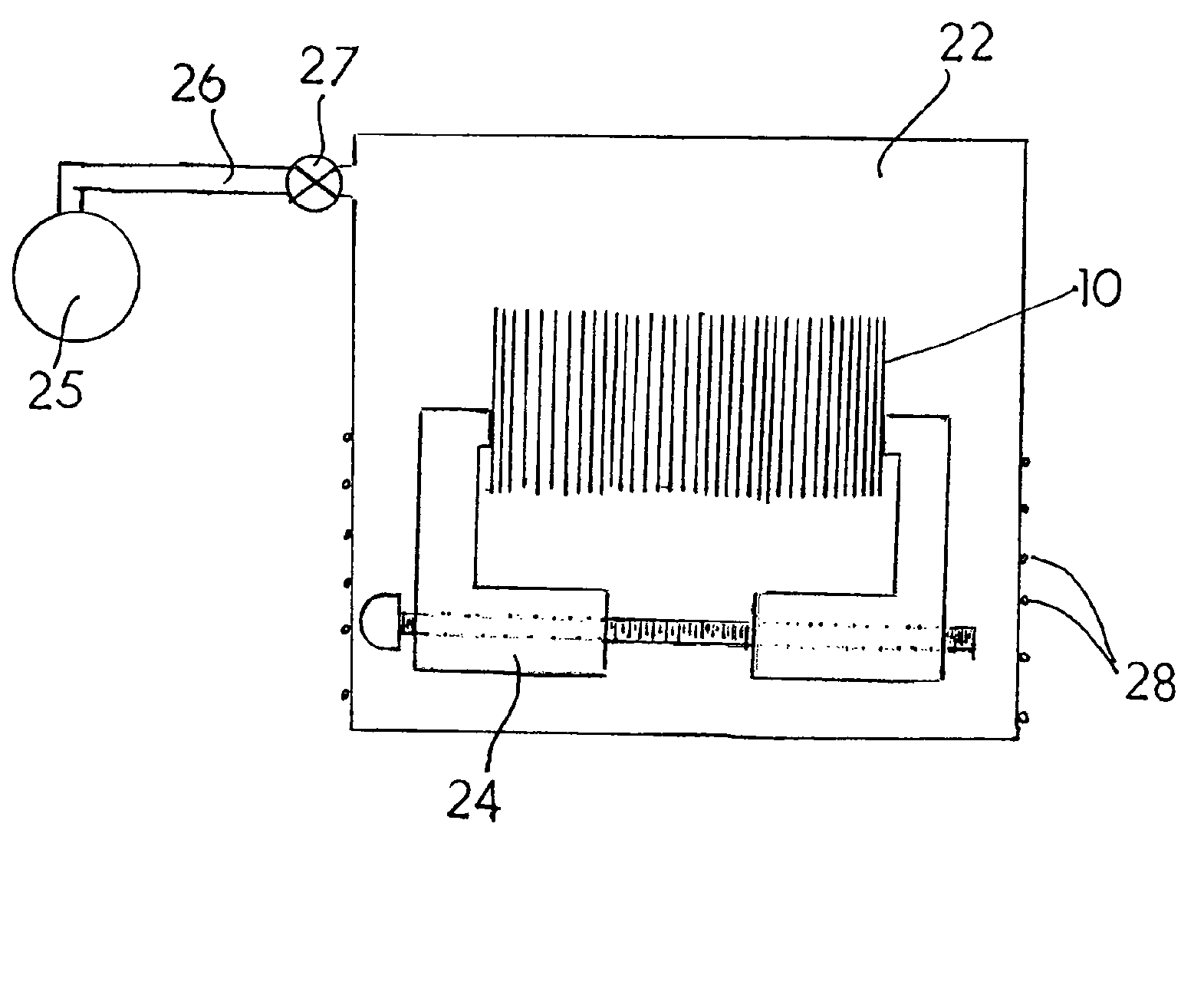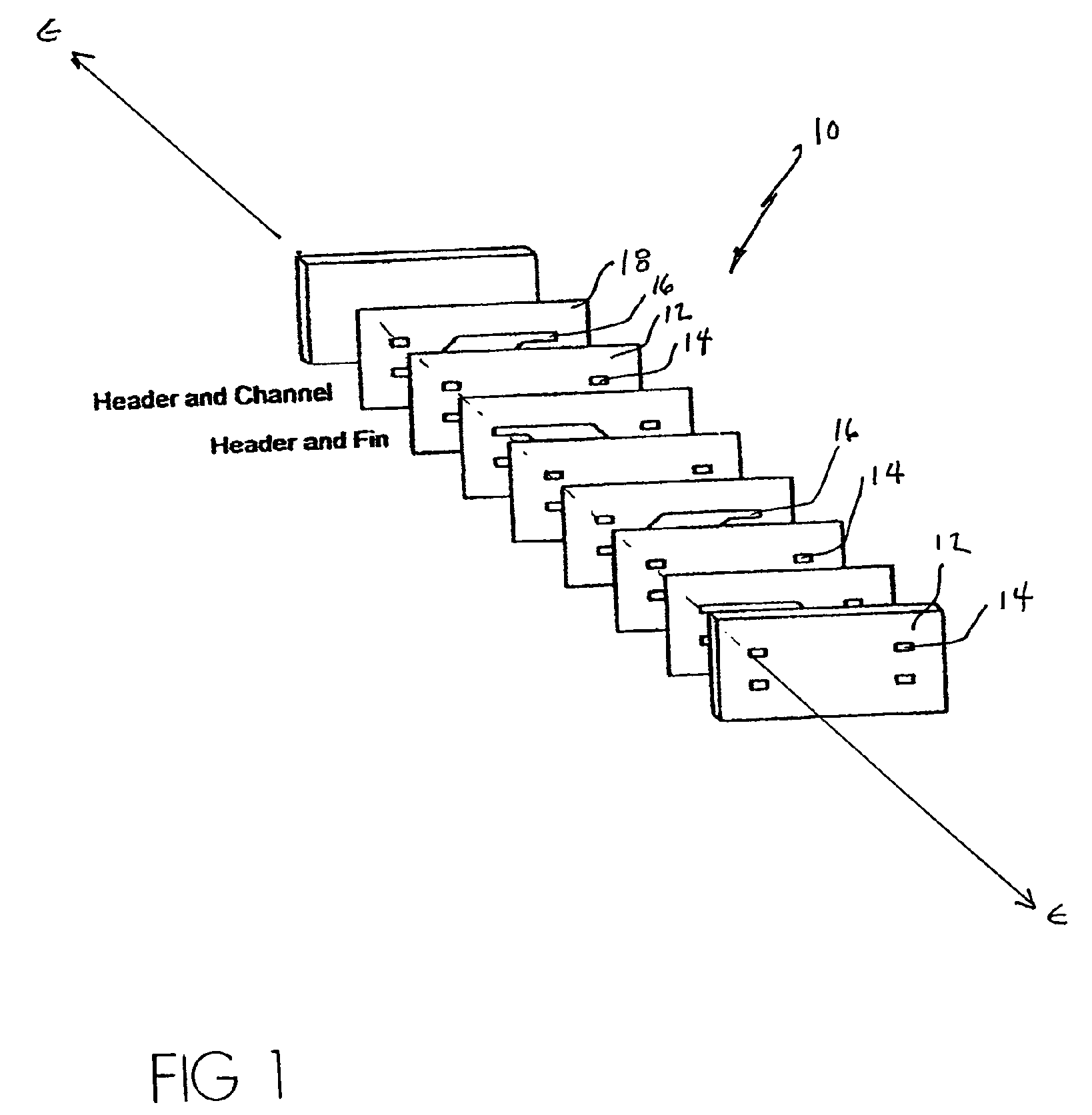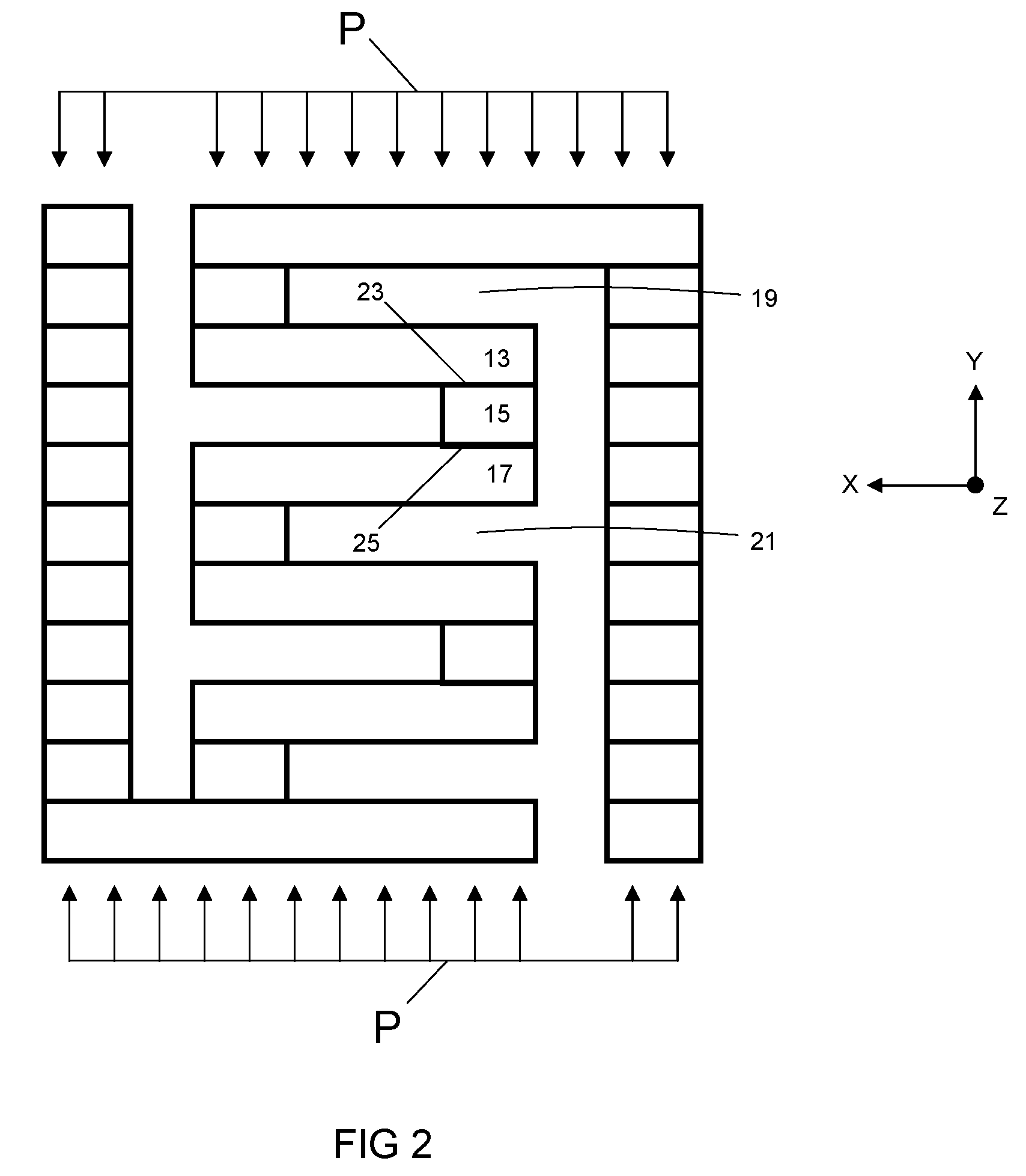Method for producing components with internal architectures, such as micro-channel reactors, via diffusion bonding sheets
a technology of diffusion bonding and microchannel reactors, which is applied in the direction of superconductor devices, manufacturing tools, and so on, can solve the problems of reducing the efficiency of the reaction rate, slow reaction rate, and void shrinkage, and reducing the size of the void, so as to reduce the voids and unintentional voids in the laminates. , to prevent the collapse or distortion of those regions, the effect of reducing costs
- Summary
- Abstract
- Description
- Claims
- Application Information
AI Technical Summary
Benefits of technology
Problems solved by technology
Method used
Image
Examples
Embodiment Construction
[0041]The method herein provides a two step process for diffusion bonding laminates such that the final assembled construct comprises a robust structure containing internal voids and channels. The internal voids and channels are in fluid communication with the exterior of the structure and serve as a means for providing heat exchange to a plurality of fluids passing through separate pathways within the construct. The voids and channels also provide reaction surfaces for the fluids passing through the voids and channels. The method involves a graduated diffusion bonding process wherein a uniaxial pressure is utilized at a first temperature and for a first time to provide initial diffusion bonding at interfacial contact areas throughout the laminate stack. The uniaxial pressure is low relative to a typical uniaxial pressure which would be applied at the first temperature and the first time for complete diffusion bonding. As a result, following the uniaxial pressure, the interfacial co...
PUM
| Property | Measurement | Unit |
|---|---|---|
| height | aaaaa | aaaaa |
| thickness | aaaaa | aaaaa |
| uniaxial pressure | aaaaa | aaaaa |
Abstract
Description
Claims
Application Information
 Login to View More
Login to View More - R&D
- Intellectual Property
- Life Sciences
- Materials
- Tech Scout
- Unparalleled Data Quality
- Higher Quality Content
- 60% Fewer Hallucinations
Browse by: Latest US Patents, China's latest patents, Technical Efficacy Thesaurus, Application Domain, Technology Topic, Popular Technical Reports.
© 2025 PatSnap. All rights reserved.Legal|Privacy policy|Modern Slavery Act Transparency Statement|Sitemap|About US| Contact US: help@patsnap.com



